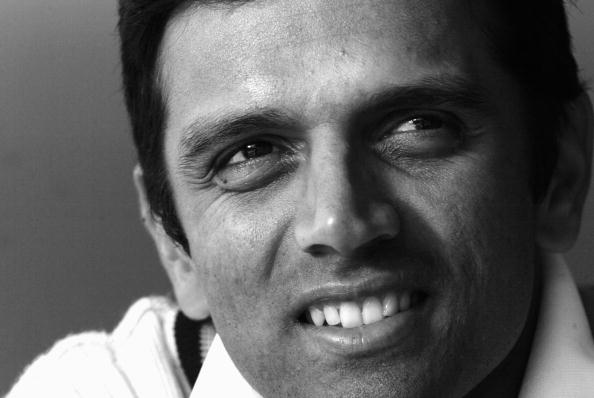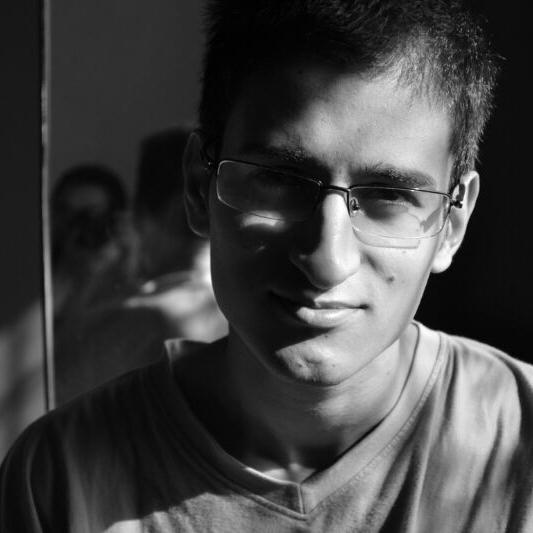Rahul Dravid | The man who had to work for everything

© Getty Images
Sportsmen have a knack of surprising their fans by doing unexpected things. But when Rahul Dravid turned down an honorary doctorate by Bangalore University stating that he would earn a doctorate degree by accomplishing academic research in the field of sport, no one was really surprised.
In a country where sports often takes the backseat to education, Dravid chose to represent India while he was completing his MBA in 1996. By his own admission, he wasn't the "most prodigiously talented cricketer" in Karnataka, let alone India, and it was down to his hard work that he is even talked about in the same breath as Sachin Tendulkar. When it comes to India, we have a very narrow understanding of the word talent. As far as cricket is concerned, we associate talent with a batsman's ability to cleanly strike a cricket ball. The various intangibles in sports such as determination, temperament, discipline, and the sheer ability not to let things get to their heads are more often neglected. There have been countless examples of players with tremendous natural abilities who have failed miserably after struggling to manage the limelight and faded away without leaving a legacy.
Rahul is the kind of person who young cricketers can look upto; not because of his success but also because of the way he conducts himself
Steve Waugh on Dravid
While the longer format of the game came naturally to him, white ball cricket was a different kind of monster that would have given the 44-year-old many sleepless nights in 1996. He was handed his first cap against Sri Lanka in an ODI in Singapore where he was dismissed for a mere score of 3. He followed those up with scores of just 4, 3, and 11. However, on the back of helping Karnataka to their first Ranji Trophy title in 13 years, Dravid was called up to the Test team for the England tour. Scoring 187 runs in three innings, he made his way onto the tongues of millions of cricket fans in India. However, with the success came the tag of being "just a Test player" as well. He took his own sweet time but he managed to crack the ODI code as well. In the next series named "the friendship cup" against Pakistan, Dravid showed what he was capable of with a well-made 90. Dravid kept building on that and at the end of his career finished with 10,889 ODI runs to his name at an average of 39.16.

 © Getty Images
© Getty ImagesBut it wasn't all smooth sailing for Dravid as he was questioned indefinitely after a couple of average years (by his standards). After averaging over 50 runs for five straight years, which included a year where he averaged over 100 in Tests, Dravid had a bit of slump in 2007 and 2008, where he averaged 35 and 30 respectively. However, in 2009, fans saw the old Dravid back in form as helped India to a 1-0 away win in New Zealand and followed it up with two big centuries against Sri Lanka at home ending the year with an outstanding average of 83 and he was the "Great wall of India" again.
Dravid could play attacking cricket like me but I could never play like him
Chris Gayle
For a player who had well-documented struggles in the limited format, T20 cricket was supposed to be an insurmountable challenge. But, to everyone's surprise, he mastered the slam-bam style of the IPL as well. He played in the league for six years and with a new and transformed game caught the attention of everyone. For a player who was considered to be a typical Test player, Dravid never finished an IPL campaign with a strike rate lower than a run-a-ball. The Wall, even finished in the top ten run scorers in two consecutive IPL seasons further proving to the world that he could adapt to any style of the game.
When the Indian legend finally hung up his bat, the next challenge appeared to be pretty straight forward. He took up the role of mentor for the Rajasthan side before he received the big call. After the Indian team flirted with the position of Team Director for almost a year, the BCCI decided to appoint Anil Kumble as the head coach. However, according to then president Anurag Thakur, Anil Kumble was not the first choice for the role. "I requested Rahul Dravid to coach the Indian team. He didn’t say
All these things going around is not called aggression. if you really want to see aggression look into Dravid's eyes
Matthew Hayden
The guy has always lived his life in a very modest and humble fashion, as such it was never a surprise that he chose the less lucrative but more important role of coaching the next generation of stars. Over the last couple of months, Jayant Yadav and Karun Nair who have a name for themselves in the Indian team have credited the former Indian skipper for helping them navigate their way into the first team.

 © Getty Images
© Getty Images“You can discuss with him (Dravid) about the mental space you are in, what you feel is lacking (in your game) and what's going for you. He takes into account everything and gives his ideas. If you like it, you can take it or you need not. That's the best part about Rahul
So is it really a surprise that a player who has always shunned the limelight, picked substance over pizzazz, worked tirelessly to become
